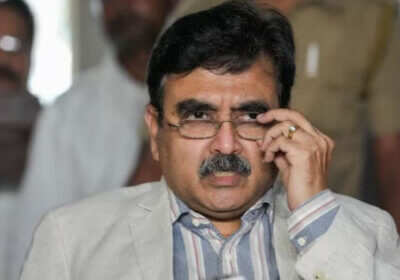According to Railway Minister Ashwini Vaishnaw, Friday’s tragic train crash in Odisha’s Balasore district, which resulted in 288 fatalities and over 1,000 injuries, was caused by a technical malfunction in the signalling system. Vaishnaw confirmed that the issue was related to the point machine and electronic interlocking system, which is a complex signal system designed to prevent train collisions by coordinating their movements on the tracks. The railway ministry issued a statement saying a technical glitch behind Odisha train accident.
A Technical Glitch In Signalling System Caused Odisha Train Accident

Technical Glitch Behind Odisha Train Accident : Railway Ministry
The malfunction in the electronic interlocking system led to the fatal incident. Vaishnaw stated that the accident occurred due to a change that took place during electronic interlocking. The specifics of who was responsible and how it happened will be determined through a thorough investigation.
Also Read | Odisha Train Mishap: Over 250 People Dead So Far
The collision involved three trains: the Bengaluru-Howrah Yashwantpur Superfast Express, Shalimar-Chennai Central Coromandel Express, and a goods train. It took place near the Bahanaga Bazar station in Balasore. At the time of the accident, the passenger trains were reportedly carrying approximately 2,500 passengers.
The root cause of the incident has been identified, according to Vaishnaw, but he refrained from providing further details until the official report is released. He also denied claims that the accident could have been prevented with the anti-collision system “Kavach,” dismissing allegations made by West Bengal Chief Minister Mamata Banerjee.
Restoration efforts are currently underway, with one of the main lines already having tracks laid down. The affected tracks are expected to be fully operational by Wednesday, and over 1,000 personnel are engaged in the restoration process. Several machines and equipment, including Poclain machines, Accident Relief Trains, and cranes, have been deployed.
Approximately 300 families of the accident victims have received compensation from the railway ministry. Special trains are being arranged to facilitate the return of patients to their homes after receiving treatment from various cities.
The official report, which is forthcoming, will provide more comprehensive details. Preliminary findings indicate that the signal was given and then withdrawn for the up main line of the Coromandel Express. As a result, the train entered the loop line, collided with the goods train, and derailed. Meanwhile, the Bengaluru-Howrah Superfast Express passed through the down main line, leading to the derailment and overturning of two of its coaches.
According to Jaya Varma Sinha, a Railway Board member, there was an issue with the signalling system, and only the Coromandel Express was involved in the accident. The train was traveling at approximately 128 km/h. The impact of the collision primarily affected the Coromandel Express due to the presence of iron ores on the goods train. This resulted in a significant number of fatalities and injuries.
Sinha further explained that the derailed coaches of the Coromandel Express struck the last two coaches of the Yashwantpur Express, which was crossing at a speed of 126 km/h from the downline.
The rescue operations following the accident involved multiple response teams, including the National Disaster Response Force (NDRF), Odisha Disaster Rapid Action Force (ODRAF), Fire Services and Emergency units, and the Indian Air Force (IAF). The IAF deployed Mi-17 helicopters to assist in the evacuation of the deceased and injured individuals.























Pingback: Railways Request CBI investigation into the Odisha train accident
Pingback: Odisha Train Crash - Investigation Points To 'Deliberate Interference'